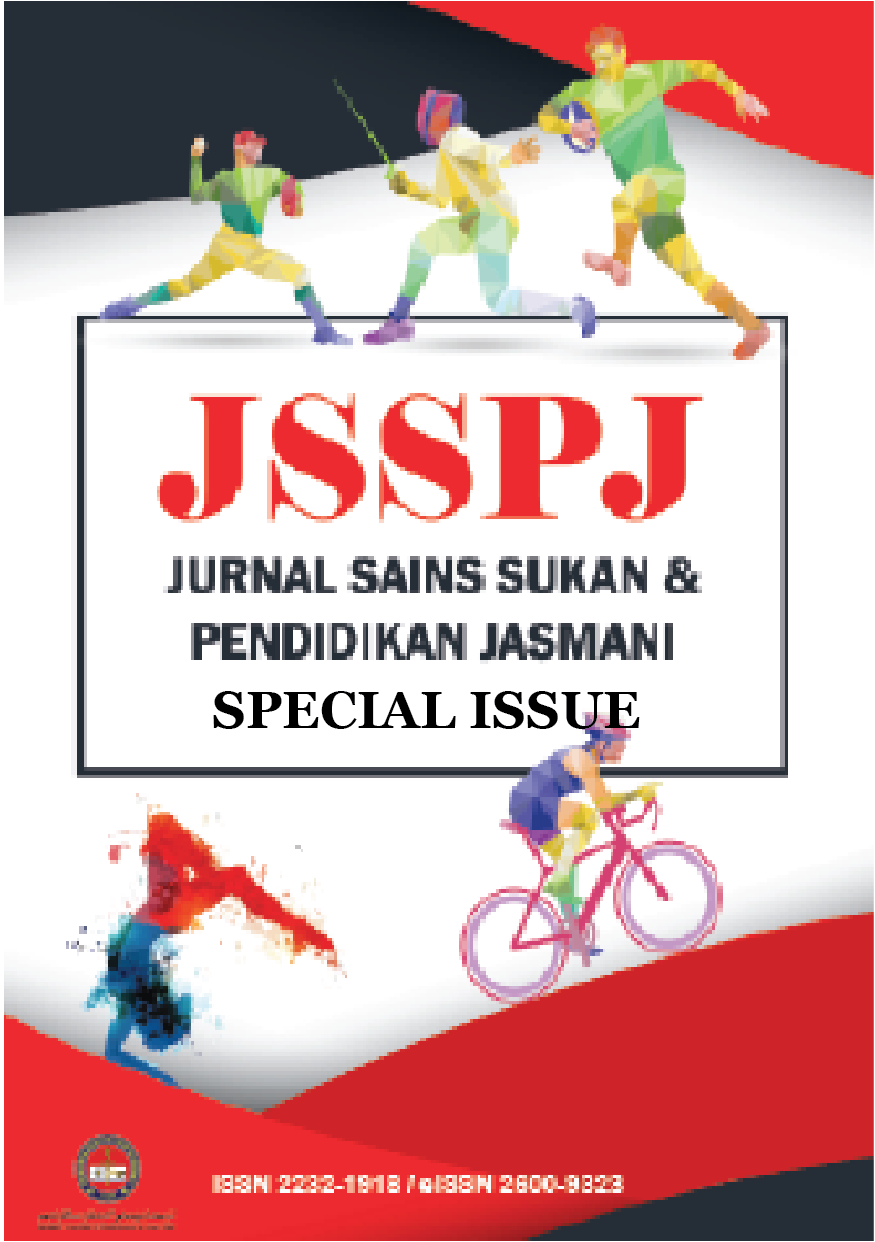The Relationship of Fatigue to Service Consistency in Intermediate Level Tennis Players
DOI:
https://doi.org/10.37134/jsspj.vol11.sp.8.2022Keywords:
Fatigue, Protocol, Reliability, Heart Rate, ConsistencyAbstract
Fatigue is being said as one of the factors contributing to the deterioration of skill performance in the sport of tennis. Therefore, this study was conducted to examine the effects and association of fatigue to the service shot consistency. This study involved 2 intermediate level tennis players who were 16 years old. Study subjects had to undergo 3 testing sessions on different days. At each testing session, subjects had to undergo the Protokol Intervensi Cetusan Keletihan (PICK) until volitional fatigue was reached. Next, subjects were required to undergo the protokol Pengujian Ketepatan Servis Tenis (PKST) to test service accuracy during fatigue. The fatigue achievement indicator for this study was based on the Rate of Perceived Exertion (RPE) feedback. The findings of the study found that the mean heart rates of the subjects for the three sessions were 147.9 ± 6.3 bpm, 133.1 ± 7.6 bpm and 146.2 ± 14.9 bpm. Paired T-test analysis showed no significant difference between the consistency of service shots before and after subjects reached maximum fatigue. However, the findings of the study found that service consistency was low when players were in fatigue and this association had a very strong and significant negative correlation (r = 1.00; p <0.01). These findings prove that fatigue has a clear correlation with service shot performance, especially for intermediate level players.
Downloads
References
Escamilla, R. F., Barrentine, S. W., Fleisig, G. S., Zheng, N., Takada, Y., Kingsley, D., & Andrews, J. R. (2007). Pitching biomechanics as a pitcher approaches muscular fatigue during a simulated baseball game. American Journal of Sports Medicine, 35(1), 23–33. https://doi.org/10.1177/0363546506293025
Fernandez-Fernandez, J., Ulbricht, A., & Ferrauti, A. (2014). Fitness testing of tennis players: How valuable is it. British Journal of Sports Medicine, 48(SUPPL. 1). https://doi.org/10.1136/bjsports-2013-093152
Girard, O., Racinais, S., Micallef, J. P., & Millet, G. P. (2009). Spinal modulations accompany peripheral fatigue during prolonged tennis playing. Scandinavian Journal of Medicine and Science in Sports, 21(3), 455–464. https://doi.org/10.1111/j.1600-0838.2009.01032.x
Hornery, D. J., Farrow, D., Mujika, I., & Young, W. (2007). Fatigue in Tennis. Sports Medicine, 37(3), 199–212. https://doi.org/10.2165/00007256-200737030-00002
Kovacs, M. S. (2007). Tennis Physiology. Sports Medicine, 37(3), 189–198. https://doi.org/10.2165/00007256-200737030-00001
Martin, C., Bideau, B., Delamarche, P., & Kulpa, R. (2016). Influence of a prolonged tennis match play on serve biomechanics. PLoS ONE, 11(8), 1–14. https://doi.org/10.1371/journal.pone.0159979
Rota, S., Morel, B., Saboul, D., Rogowski, I., & Hautier, C. (2014). Influence of fatigue on upper limb muscle activity and performance in tennis. Journal of Electromyography and Kinesiology, 24(1), 90–97. https://doi.org/10.1016/j.jelekin.2013.10.007
Vergauwen, L., Madou, B., & Behets, D. (2004). Authentic evaluation of forehand groundstrokes in young low- to intermediate-level tennis players. Medicine and Science in Sports and Exercise, 36(12), 2099–2106. https://doi.org/10.1249/01.MSS.0000147583.13209.61
Downloads
Published
Issue
Section
License
Copyright (c) 2022 Abdul Azim Azfar Alias, Syahrul Ridhwan Morazuki

This work is licensed under a Creative Commons Attribution-NonCommercial-ShareAlike 4.0 International License.





